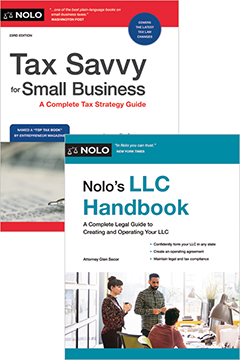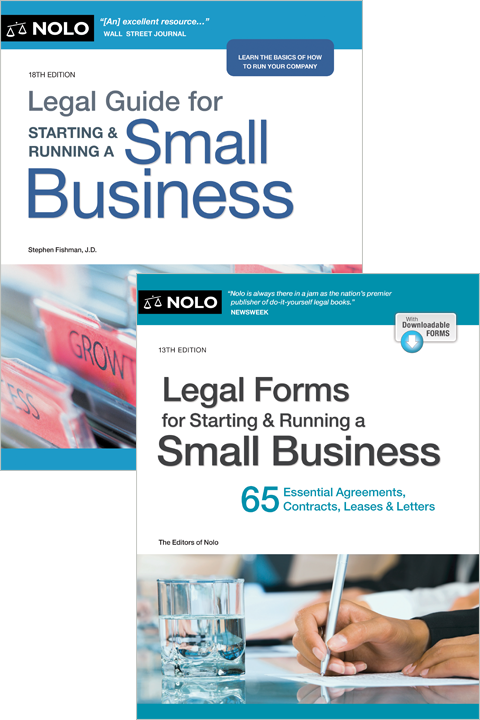Find out how to go about dissolving an LLC in Texas, including filing a certificate of termination, settling debts, and distributing assets.
Closing your Texas limited liability company (LLC) will involve a variety of tasks. Among the most important are what's known as "dissolving and winding up" the business.
This article covers information specific to dissolving and winding up your Texas LLC. Key elements of the dissolution procedure are laid out in the following sections of Texas law: Tex. Bus. Org. Code §§ 11.051 and following (2023).
For general step-by-step guidance, see our article on the steps to take to dissolve your LLC.
Dissolving Your LLC in Texas
Your LLC is registered with the State of Texas. Officially ending its existence as a state-registered business entity—and by extension, putting it beyond the reach of creditors—begins with a formal process called "dissolution." While an LLC might be involuntarily dissolved by the state or a court, here we're concerned with voluntary dissolution by the LLC owners (called "members").
Dissolving your business refers to the process of voting to end your LLC and filing the appropriate paperwork with the Texas government.
Winding up your business refers to the process of:
- settling your business debts
- liquidating your assets, and
- ending your licenses, permits, registrations, and accounts.
Be aware that Texas is different from every other state in the country in that, for almost all practical purposes, it has no separate LLC Act. Instead, as of January 1, 2010, Texas LLCs are mainly governed by the Texas Business Organization Code (BOC). Unlike comparable laws in other states, the BOC tends to avoid the word "dissolution," as well as references specifically to LLCs, and instead speaks more generally of various possible "events" that would "require" the "winding up" of a Texas "domestic entity."
Review Your LLC Articles of Organization and Operating Agreement
To voluntarily dissolve your LLC, you first should look at the company's formational documents:
- the articles of organization, and
- the operating agreement.
In most cases, one of those two documents will contain a section with rules for how to dissolve the company. Typically the rules will require a vote of the LLC members on a resolution to dissolve, and more specifically a requirement that some percentage of members vote in favor of the resolution. For example, your operating agreement might require two-thirds of the LLC members to vote to approve the dissolution for the vote to pass.
Make sure you follow any specific procedural requirements that might be part of the dissolution rules, such as setting a specific time to meet and vote and giving advance notice to all members regarding the meeting.
Texas's LLC laws. If your articles of organization or operating agreement don't specify when and how the LLC can be dissolved, you'll need to apply Texas's default rules for LLCs. Under Texas law, you can dissolve your LLC with the consent of a majority of the LLC members. (Tex. Bus. Org. Code § 101.552 (2023).)
For example, suppose an LLC has three members. Member A has a 60% membership interest and Members B and C each have a 20% interest. A vote by Members B and C to approve the LLC's dissolution would be effective—in spite of the fact that Member A has a majority interest in the company.
Recording your decision to dissolve. For either dissolution approach—relying on rules in formational documents or on the consent of a majority of the LLC members—you should make sure to record the decision to approve the dissolution. You can record this action in the official minutes of the dissolution meeting or on a written consent form.
Note that if you have any legal actions or proceedings filed by or against your business, dissolving your LLC doesn't stop these actions.
Do You Need to Obtain Tax Clearance Before Dissolving Your LLC?
Texas, unlike most other states, does require you to obtain tax clearance before dissolving your LLC. (Tex. Bus. Org. Code § 11.101 (2023).) You'll need to obtain a tax certificate from the Texas Comptroller of Public Accounts (Comptroller).
You can complete the clearance request form online or on paper. To complete a request online, go to the Comptroller's eSystems website. To file a request on paper, download Comptroller Form 05-359 (Request for Certificate of Account Status), complete the form, and then mail it to the Comptroller.
There's no filing fee to obtain your tax certificate. Be aware that it can take a month or more to receive the certificate. Once you have the tax certificate, you'll attach it to your certificate of termination (see below).
In addition to obtaining tax clearance from the state, it's a good idea to file the following tax-related documents as part of dissolving your LLC:
- final business tax returns, and
- if you sell goods, a final sales tax return.
When you file your federal tax return, check the "final return" box on your IRS Form 1065 (if your LLC is classified as a partnership for tax purposes) or IRS Form 1120 (if your LLC is classified as a corporation for tax purposes).
Winding Up Your LLC in Texas
Following the vote to dissolve your LLC, the company continues to exist for the purpose of taking care of final matters that, collectively, are known as "winding up" the company. You'll probably designate one or more LLC members or managers to handle the winding up.
Under Texas's LLC laws, key winding-up tasks include:
- sending a written notice to anyone with a claim against the LLC (such as a creditor)
- collecting and selling LLC property that will not be distributed in kind to LLC members
- applying and distributing LLC property to discharge, or make adequate provision for the discharge of, all of the LLC's liabilities and obligations (this includes liabilities and obligations owed to LLC members other than distributions).
- after discharging, or making adequate provision to discharge, all LLC liabilities and obligations, distributing the remainder of the LLC's property to the members according to their respective rights and interests
- prosecuting and defending lawsuits, if any; and
- performing any other act required to wind up the LLC's business and affairs.
(Tex. Bus. Org. Code §§ 11.052 and 11.053 (2023).)
All of these tasks are natural and important steps in closing your business. Moreover, avoiding any of them can put you and your business at risk—financially and legally.
Settling Debts and Distributing Assets
When settling your company's debts and distributing its assets, Texas law requires you to make payments in a particular order:
- to creditors (including members who are creditors); and then
- to members according to their respective rights and interests.
(Tex. Bus. Org. Code § 11.053 (2023).)
For example, suppose Deepheart Management is a Texas LLC that has three members: Nikki, Olaf, and Petra. The three members have equal membership interests and all agree to dissolve the business. After liquidating its assets, the company has $100,000 to distribute.
First, the LLC must pay off its creditors. So, the business pays the remaining $10,000 on a loan and $5,000 in taxes, leaving $85,000. Second, the company must pay Olaf back the $25,000 he contributed to the business when it first started out. Third, the LLC can distribute the remaining $60,000 to the members according to their respective rights and interests. Because the members have equal interests, each member will receive $20,000.
Notifying Creditors of Your LLC's Dissolution
Under Texas law, you're required to notify creditors of the company's dissolution by sending them a written notice. (Tex. Bus. Org. Code § 11.052 (2023).) In your notice, you should tell your creditors that they should submit any claim against you to a specified address by a specified date.
You should also put a notice of your LLC's dissolution in a local newspaper. While not required, publishing a dissolution notice can help protect you from liability. For example, a creditor probably couldn't argue that you intentionally avoided paying a debt by secretly dissolving your business if you published your dissolution in the newspaper.
Canceling Out-of-State Registrations and Other Licenses and Permits
Is your LLC registered or qualified to do business in other states? If so, you must file separate forms to terminate your right to conduct business in those states. Depending on the states involved, the form might be a:
- termination of registration
- certificate of termination of existence
- application of withdrawal, or
- certificate of surrender of right to transact business.
If you don't file the additional termination forms, you'll continue to be liable for annual report fees and minimum business taxes.
Texas doesn't require a general business license. But depending on your business and profession, you might be required to have different licenses and permits. You should cancel any licenses, permits, and registrations associated with your business. You might be able to sell or transfer some permits.
You also need to close any bank accounts in your business name. In addition, make sure to end or settle any contractual obligations. You might be able to assign your contract rights and obligations to someone else.
Filing a Certificate of Termination With the Texas Secretary of State
When all of the property and assets of your LLC have been properly distributed, you need to cancel your certificate of formation by filing a certificate of termination with the Secretary of State (SOS). The certificate of termination will at least contain:
- the name of your LLC
- the file number issued to the LLC by the SOS when the LLC was formed
- the nature of the event requiring winding up (namely, a voluntary decision approved as required by the BOC); and
- a statement that the LLC has complied with the provisions of the BOC regarding winding up.
You might also need to provide other information, such as the date on which you want the termination to be effective or the names and addresses of LLC members.
The certificate of termination must be signed by an authorized individual, such as an LLC member or legal representative. As of 2023, the filing fee for the articles is $40. You can either file the articles online using SOSDirect or download a certificate of termination form (Form 651). The downloadable form includes instructions.
Note that you must include your tax certificate from the Comptroller (see above) with your certificate of termination.
Be aware that your business name will become available for use by others once your LLC is dissolved.
Additional Guidance on Dissolving Your LLC
Dissolving and winding up your LLC is only one piece of the process of closing your business. For further general guidance on many of the other steps involved, see our checklist for closing your business and read about what you need to know about closing a business.
If you have further questions or need legal assistance, you should talk to a Texas business attorney. Many business owners can dissolve their LLCs on their own. But you might want to seek legal help if there are disagreements among members, complicated debt settlement negotiations, or ambiguous contract assignment terms.



